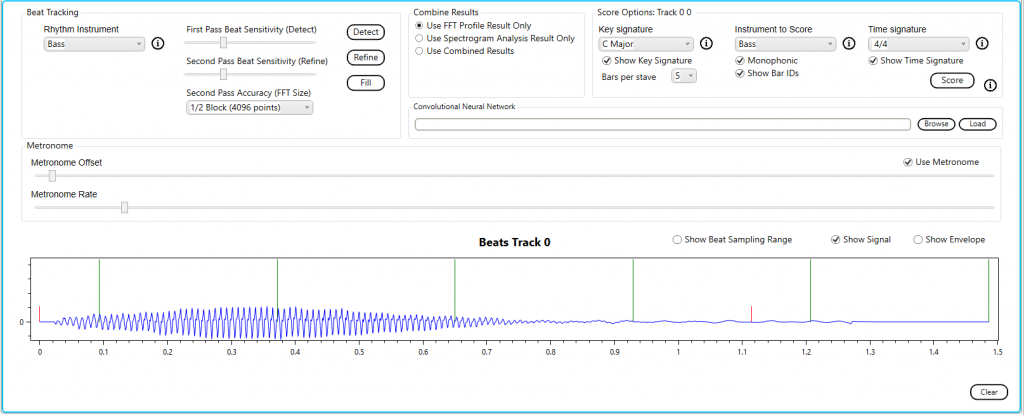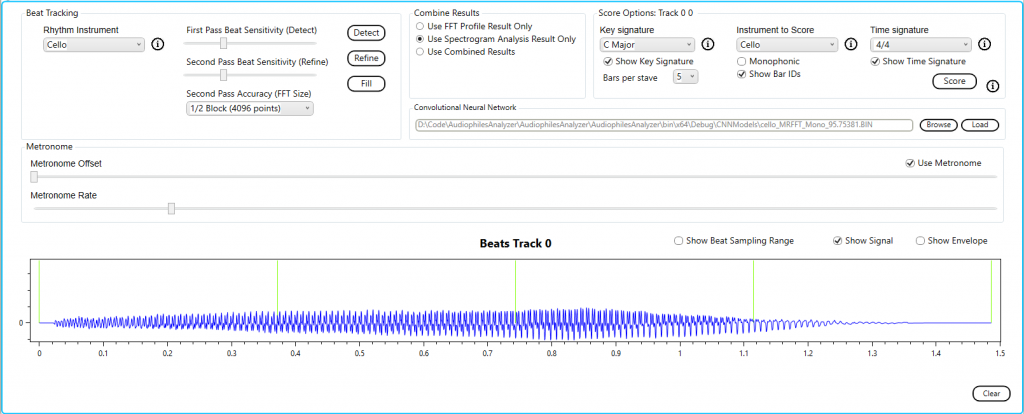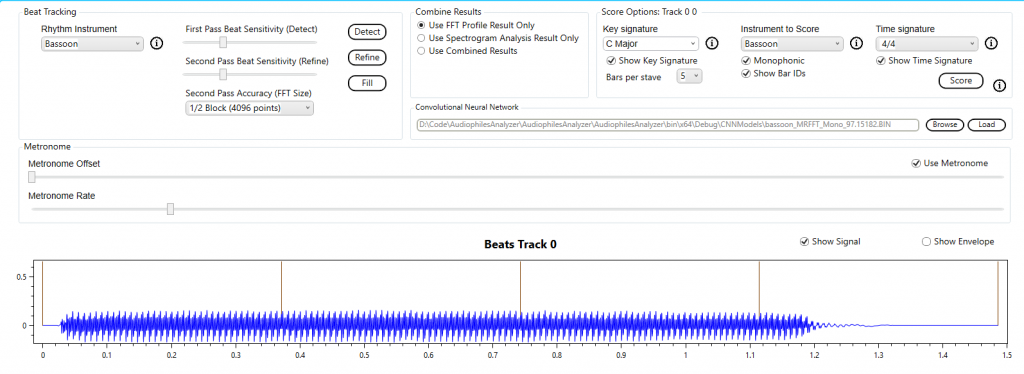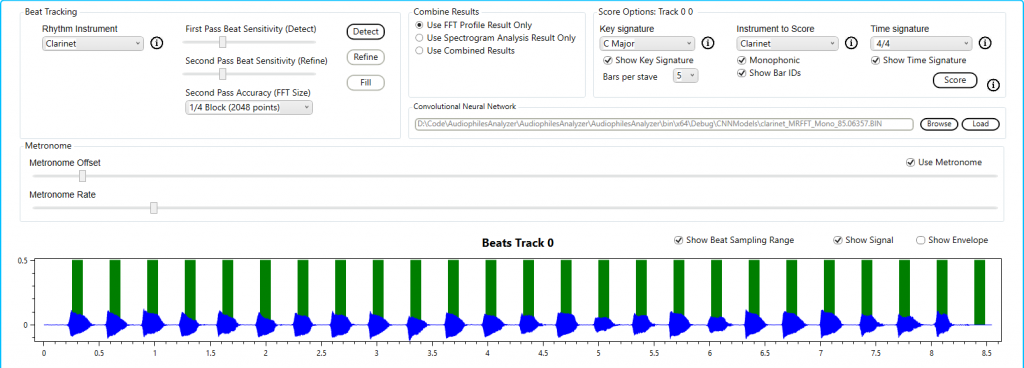It can take a day or so to train a CNN model, or several minutes to create a profile, assuming that you have enough suitable samples. Fortunately it is possible to transcribe without prior training for a particular instrument. To illustrate this I have a single note played on a double bass (A octave 2).


To transcribe I set the options to No Profile and Constant Q Mapping.

Selecting Use FFT Profile Result only

The result is

Selecting Use Spectrogram Analysis Result only I get

Here I perform the same task, i.e. single note (A2), this time from a cello. This is a little more difficult as the cello is a polyphonic instrument with very strong harmonics.

From the signal and FFT result we can see that the first overtone has more energy than the fundamental frequency.

This problem is attenuated in the Multi-rate FFT spectrogram as the overtone is sampled over less time in the shorter sampled higher frequency FFT.

We use the built in profile for the cello.

Here we can see that as the note fades on the last beat the overtone is also transcribed.
Since we know that this was a single note the monophonic check box should be checked.

Now the result is as expected.

Using the built in Convolutional Neural Network for the cello we see leading and trailing silence; only the red line from the spectrogram has been transcribed.
The threshold for silence is calculated differently for the algorithm and the CNN. The algorithm sets the threshold on the fly during transcription based on a running average of the energy in the audio. For the CNN the threshold for silence is implemented when the spectrogram slices are prepared for training; the CNN was never trained on the parts of the note which were too quiet.
The simplest music file to transcribe is a single note. Here I use a bassoon playing a single note A (octave 2) to walk through the simplest transcription.

From the signal and FFT result we can see that this is indeed a single note with a single dominant frequency.

The spectrogram confirms the simplicity of this example.

To transcribe this note we will use the built in bassoon profile and the default options (i.e. correlation).

The result is as expected.
Alternatively we could have elected to use the built in Convolutional Neural Network for the bassoon.

The result is a little different. The note ends just after the forth beat. The CNN transcribes this as a 3 beat note, not 4 beats.





